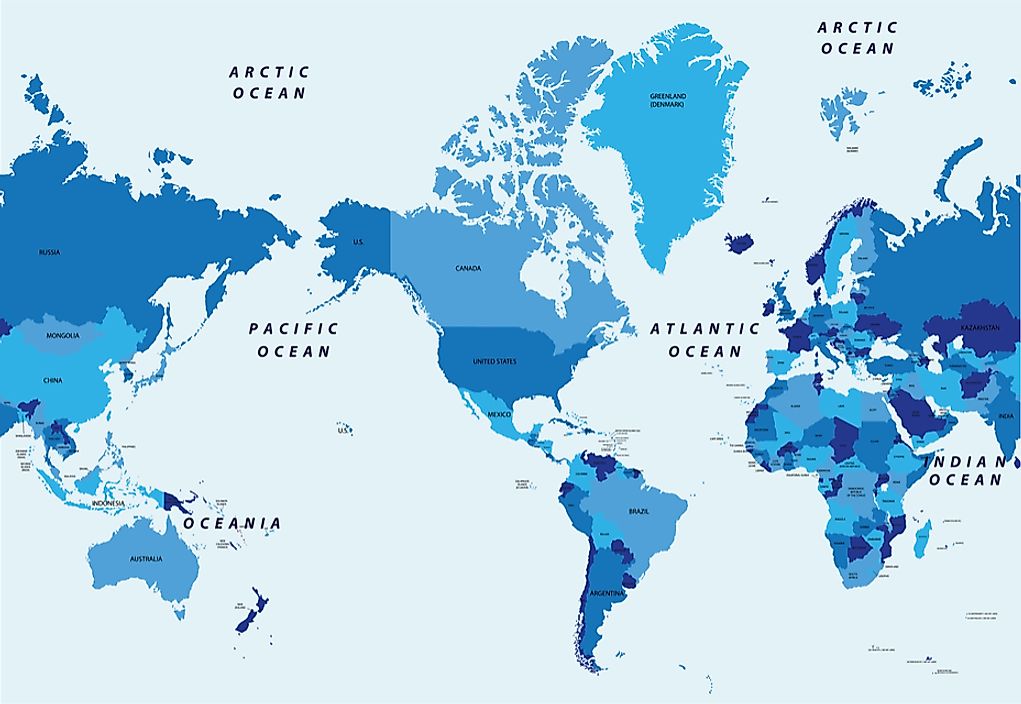Which Ocean Is the Largest?

The Pacific Ocean ranks as the largest of the world’s oceans, followed by the Atlantic Ocean, and subsequently the Indian Ocean. Even before the Europeans sighted the vast ocean, pre-historic communities, such as the Austronesian peoples, had sailed across it.
Etymology
In 1519, the Portuguese navigator, Ferdinand Magellan began crossing the Atlantic Ocean in search of a western route that would lead him to the Spice Islands through South America. The small fleet managed to overcome perilous seas and navigate the Straits of Magellan to enter the previously unknown ocean in November 1520. Magellan named this water body Pacific because of the calmness of the ocean at that time. Magellan and his fleet assumed that the Spice Islands were nearby, although they were a thousand miles away from their destination.
Geography of the Pacific Ocean
The Pacific Ocean's surface area of 64,000,000 square miles is nearly one-third of the surface of the Earth. The Pacific accounts for 46% of the water surface of Earth. The equator cuts across it to form the South Pacific Ocean and the North Pacific Ocean. The ocean further separates the regions of Australia and Asia from the Americas. The Pacific is home to the deepest point known in the world, named the Mariana Trench, at 35,797 feet deep. Plate tectonics have been causing the Pacific to shrink by about 1 inch annually on three sides. The Bering Strait links the Pacific Ocean with the Arctic Ocean in the north, while to the west the Indonesian Seaway connects the Pacific Ocean with the Indian Ocean. The Strait of Magellan acts as a link between the Pacific and the Atlantic Ocean to the east. There are numerous seas along the irregular western margins of the Pacific, including the Yellow Sea, Celebes Sea, Tasman Sea, and the Sea of Japan. Although Magellan came upon a peaceful ocean, tropical storms sometimes affect its islands. The land surrounding the Pacific Rim is mainly home to volcanoes and occasional earthquakes.
Islands in the Pacific Ocean
The Pacific has a record of 25,000 islands. The islands which lie entirely within the ocean are grouped as either belonging to Polynesia, Melanesia, and Micronesia. Melanesia has the largest of the islands of the Pacific, named New Guinea, as well as groups of islands such as New Caledonia, the Bismark Archipelago, Fiji, the Solomon Islands, Vanuatu, and Sana Cruz. Micronesia is situated north of the equator and includes the islands of Kiribati, Mariana Island, the Marshall Islands, and the Caroline Islands. Polynesia ranks as the largest, with such regions as Eastern Island, Tuvalu, Austral Islands, Tokelau, Tuamotu, Samoa, and the Cook Islands. The Pacific islands are classified into four primary types, and they include the uplifted coral platforms, continental islands, coral reefs, and high islands.
How the Pacific Ocean Benefits Humans Economically?
Due to the Pacific’s depth, its mineral wealth is not extensively exploited. However, natural gas and petroleum are extracted in the shallow coasts of New Zealand and Australia. Pearls are also gathered off the coasts of the Philippines, Australia, Nicaragua, Japan, and Panama, as well as Papua New Guinea. The fish species harvested from the Pacific include shellfish, herring, swordfish, tuna, and salmon.
Environmental Concerns
In the period between 1972 and 2012, the number of plastic fragments gathered in the northeast region of the Pacific was shown to increase a hundredfold. Most of the rivers emptying into the ocean have already been heavily polluted by chemicals such as fertilizers. The Pacific also holds the remains of crashed satellites, including the Fobos-Grunt and Mars 96.











